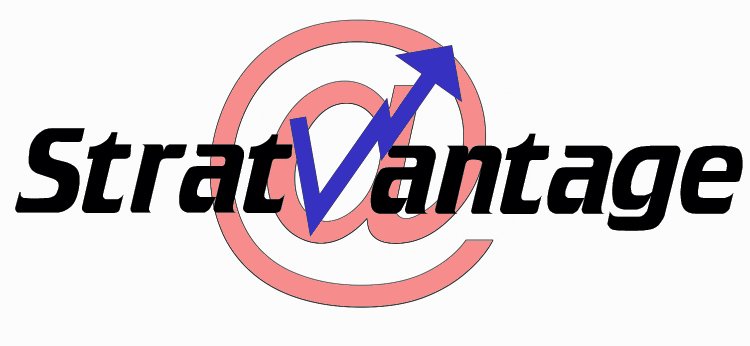From Evernote: |
StratVantage Consulting, LLC — Mike’s Take on the News 03/08/01Clipped from: http://www.stratvantage.com/news/030801.htm |
The News – 03/08/01
Upstart Domain Registry Offers New gTLDs
Just as domain name authority ICANN begins its meetings in Australia, rogue domain registry new.net has unveiled 20 new domain name suffixes for immediate availability. ICANN is supposed to be the Internet authority on domain names, but it is a voluntary organization without any real teeth. There have been other challenges to established domain authority before, but new.net is very high profile. Users of Internet Service Providers (ISPs) such as Earthlink and Excite@Home will be taken to URLs using the new generic Top Level Domain (gTLD) names automatically. Other users will need to either wait to see if the names are supported broadly, or go to www.new.net and download software that ensures their browsers can find the new sites.
Several of new.net’s gTLDs are names that ICANN rejected during their consideration of new names. ICANN approved seven new gTLDs in November, but recently announced all would not be operational by the original July deadline. New.net says their registry is online now. Here are the new gTLDs offered by both new.net and ICANN:
| gTLD | Purpose | |
| New.net Names | ||
| .chat | Chat sites | |
| .club | Clubs | |
| .family | Family sites; probably similar to ICANN’s .name | |
| .free | Sites offering free goods or services | |
| .game | Game sites | |
| .GmbH | German corporations | |
| .hola | Spanish chat sites? | |
| Corporate sites | ||
| .kids | Sites that can prove they contain children-friendly content and comply with the Children Online Privacy Protection Act. | |
| Law-related sites; probably similar to ICANN’s .pro | ||
| Limited corporations | ||
| Medicine-related sites; probably similar to ICANN’s .pro | ||
| MP3 sites | ||
| .tech | Technology-related sites | |
| .travel | Travel sites | |
| .shop | Shopping sites | |
| Social sites | ||
| .sport | Sports sites | |
| .video | Video sites | |
| .xxx. | Adult content sites | |
| ICANN Approved Names | ||
| .aero | Air-transport industry | |
| Businesses | ||
| .coop | Cooperatives | |
| .info | Unrestricted use | |
| .museum | Museums | |
| .name | For registration by individuals | |
| Accountants, lawyers, and physicians | ||
New.net started in May 2000 and is an idealab! company. idealab is a leading Internet incubator, having helped start eMachines, CitySearch.com, Intranets.com and the now bankrupt eToys (which yours truly lost money on). New.net claims to have patent-pending technology that allows their domain-naming system to exist alongside the traditional domain name system. The company charges $25 a year for a domain name, higher than the going rate for .com domains.
When I tried to register StratVantage.tech, however, I ran into a snag that will probably catch a lot of people.
I don’t actually have a dedicated IP address for my Web site; I have a virtual address. When users go to www.stratvantage.com , the domain name servers (DNS) at my hosting provider, FeaturePrice.com, direct them to 64.245.225.29/stratvantage.com/, where my Web site is. The numbers in this URL represent the IP address of the machine that hosts my site. When you sign up with new.net, they want you to either specify the IP address of your site, or the DNS servers of your hosting provider. Since I can’ use the virtual IP address, my only recourse is to indicate the DNS servers. But that means I need to contact my provider and get them to assign StratVantage.tech on their servers. And there’s no telling whether that would be possible. Many Web sites are in this same boat, so it may not be easy sledding for new.net.
Whatever happens, it will be interesting to watch this latest domain name confusion play out. Business owners need to keep tabs on it to determine whether there is a whole new range of gTLDs they need to worry about.
Watch Them Pushing Tin
If you’re like me, you don’t necessarily believe the airport personnel when they tell you your inbound aircraft is in the air. I’ve been burned many times by automated flight information phone numbers that insist the flight is on time. Well now you can see what the aircraft controllers see: every plane in the sky. But after looking at the example below, perhaps you won’t want to. Flight Dimensions International’s Flight Explorer allows any PC with an Internet connection to track airplanes anywhere in the US and in some other countries. Not only can you see a specific flight, you can see all of them, along with NexRad weather.
As cool as this app is, it appears to be quite expensive and not at all for the hobbyist. But there’s a free service on the Web that lets you track any flight with just your browser: WebTrax. This service deals with one flight at a time, and is considerably less detailed, but what do you expect for free?
Anyway, businesses that depend heavily on air transportation may want to spring for the full-featured Flight Explorer. Those of us who just want a quick check on airline veracity will be satisfied with WebTrax. You can even put their service on your Web site. Check the StratVantage site soon to see whether they’ve accepted my application. When they do, you’ll be able to track your flights right from the StratVantage main page.
Return to Mike’s Take




